
Think Before You Speak is the “let’s not say nasty anti-gay things” campaign started by the Advertising Council and GLSEN, the organization started by radical homosexual activist Kevin Jennings, who is in hiding as Barack Obama‘s safe school czar. (Also in hiding: MassResistance, which is being fingered for spearheading attacks on Jennings in the media.) In its first phase, the campaign signed up celebs like Hillary Duff to appear in ad spots showing young people why phrases like “That’s so gay” are unnecessary and hurtful. Now in Phase Two — also known as Defcon 17, bitches! — TBYS is getting all webby on us. Like with a counter on its homepage counting how many times Twitter users say things like “fag,” “dyke,” and “so gay.” This is a neat trick. It’s also kind of stupid. Allow us to explain.
1. All uses of words like “fag” are not terrible. Like GLAAD, GLSEN also had a problem with that “faggot”-filled South Park episode. And like GLAAD, they had a reactionary response: Nooooo! By counting up all the mentions on Twitter every day, GLSEN makes an arbitrary assessment of hate speech in real time. But given that we’re prolific Twitter users, we know there are plenty of gay folks out there using these words in ways that are not terrible. GLSEN’s counter doesn’t account for that usage.
2. GLSEN is aimed at school children, but Twitter is used primarily by adults. Sure, GLSEN doesn’t want anyone using bad language, but by monitoring mentions on Twitter, they’re giving the false impression this web technology is filled with anti-gay slurs written and read by young people.

As the above Comscore chart shows, most Twitter users are 35-54 — though it’s unknown whether certain age demographics are using “fag” words disproportionately more often than others. And while the chart shows activity on Twitter.com, and not traffic through desktop or mobile applications (which younger people likely use in greater numbers), Twitter’s growth has been seen as more surprising than other new web technologies precisely because older people are using it, and kids are still on MySpace and Facebook.
How about we take this to the next level?
Our newsletter is like a refreshing cocktail (or mocktail) of LGBTQ+ entertainment and pop culture, served up with a side of eye-candy.
3. Having a goal of “0” makes a cute statement, but it’s wholly unrealistic. Of course we want to live in a world where nobody says mean things to each other. But that will never be the case. Ultimately, GLSEN must be fighting for the absolute annihilation of hate speech. We’d love that too! But why not have a goal of “increasingly less and less” hate speech floating around on Twitter? It shouldn’t be hard to plug in some code to deliver a website widget that shows whether “fag” and “dyke” usage on Twitter is declining, or spiking month-over-month.
4. There are more bad phrases than just the three listed. What about “faggot,” “homo,” “queer,” “batty boy,” “fudgepacker,” “fairy,” and “Rupert Everett”? All of those are equally as offensive, and given they’re often interchangeable, clocking only three words on Twitter doesn’t give the whole picture.



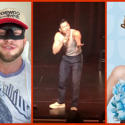
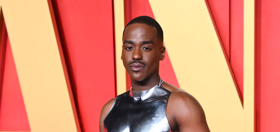







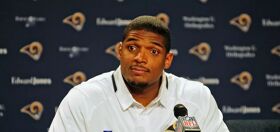

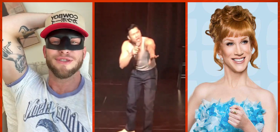

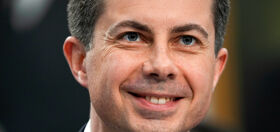

spiritedrandy
The points in the post have some validity and even a partial picture is better than none (and, if what GLSEN counts is consistent, we can track trends). In other words, don’t let perfection be the enemy of the good.
chemicalkitchen
I use dyke in my twitter account all the time because I AM ONE. If that is how I identify, then it isn’t hate speech.
This blog post (http://j-michael.blogspot.com/2009/12/challenge-to-our-communitys.html) is by someone who would undoubtedly agree with GLSEN’s counter, but they both seem to be missing the point of free speech and non-hate speech that uses the words they are interested in banning.
alan brickman
Gyas use these words all the time so it really is “suppression” of free speech by flakey straights…Hilary Duff? really?…
STRONGFathersME
They should track MySpace. That’d give a much better picture, of course it wouldn’t correct for the inability to identify intent, but it’s say more than watching twitter.
Melanie
#2 is way off base. The young, IMHO, are the ones spreading this type of ‘it’s so gay’ crap in everyday speech. Log into an online RPG sometimes like Warhammer or Age of Conan. Common speech includes this phrase for anything anyone seems to dislike in this environment. Technological anonymity allows people to speak their mind without repercussions.
Sam
More DUMB from Gay Inc. GLSEN: find something useful or productive to do. You are beginning to look a lot like GLAAD and HRC. (That’s the kiss-of-death, btw)
alex
The LGBT community should NOT be criticizing GLSEN for wanting zero uses of homophobic speech on Twitter. I’m someone that thinks that a gay-person co-opting the “F” word is wrong. It doesn’t change the meaning to the general public…so it’s useage is wrong.
I was a long-term substitute teacher in a high school in South Florida for 1.5 years. When I started, I was shocked at how often I heard something like “that’s so gay”. I made my students stop using that term (and any other pejorative). I quickly became known as “the gay sub”. Some kids thought that was an insult…but, I had three kids come to me to talk about being gay. None of those kids had been in my classes.
Queerty is such a disgrace to our community. It seems that unless you do everything as the editors want, you are labelled an “enemy” to the LBGT cause.
Organizations like HRC, GLSEN, and GLAAD make mistakes. But, without question, they all do more for the LGBT community than the bitter editors at Queerty do.
Being bitter does not advance our cause.
Shaniqua
I agree! Bitterness isn’t a bad thing. Where do you think kids pick up the language – from hearing their parents use it. My own 9 year old nephew sad his first curse word because he heard his father say it. So, if anything it’s targeting a source. Will the count ever get to zero, no. BUt bringing awareness to the language we use and the impact it can have isn’t a bad thing either.
Shaniqua
Oops sorry. Bitterness IS a bad thing…
GrrrlRomeo
I was called a “fucking dyke” as a gay teen in high school. But I also claimed “I’m a dyke” as a gay teen in high school. And I read “Dykes To Watch Out For” and watched the “Dykes on Bikes” at my first Pride as a gay teen.
GLSEN should be educating LGBT youth about our rich history and culture rather than trying to erase it.